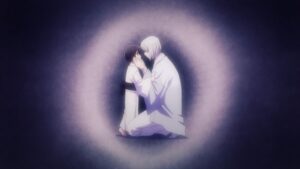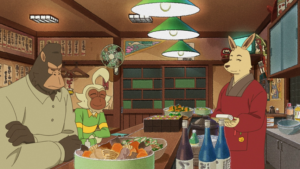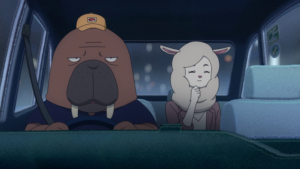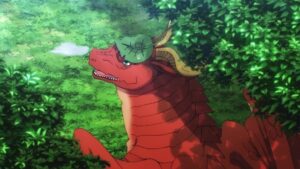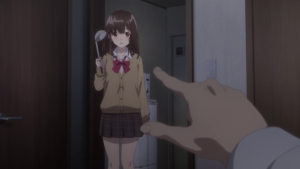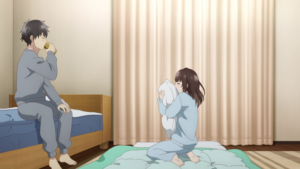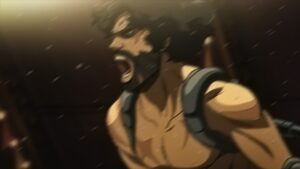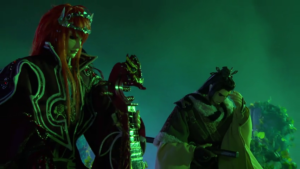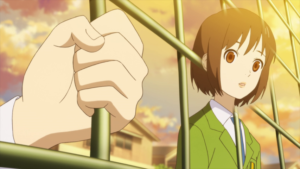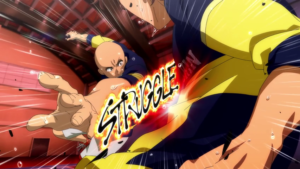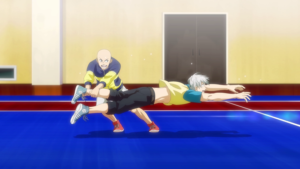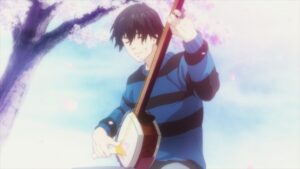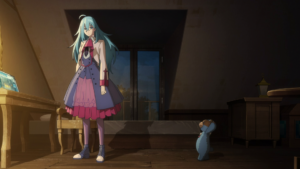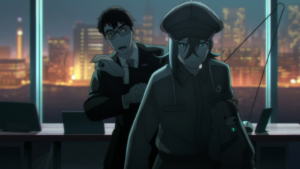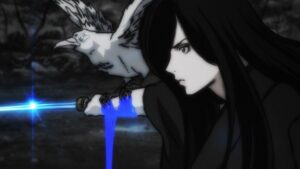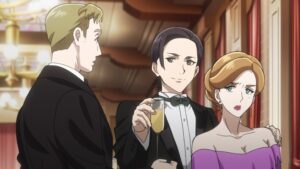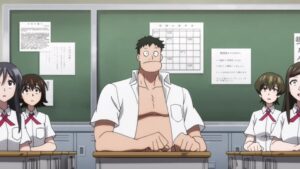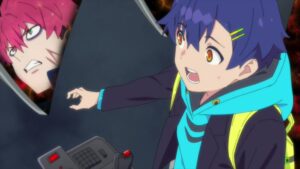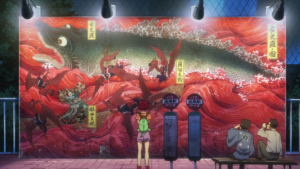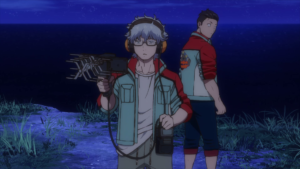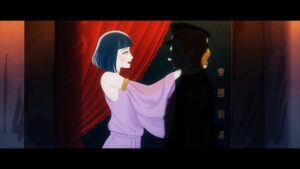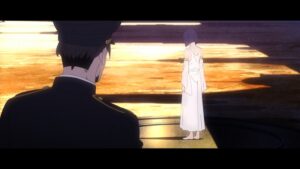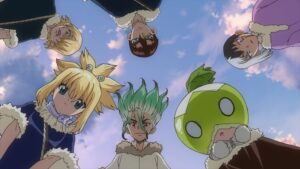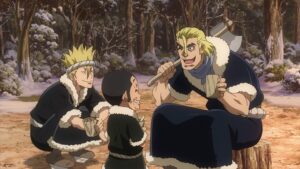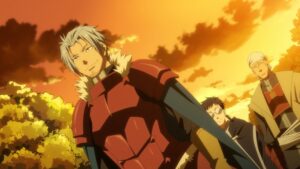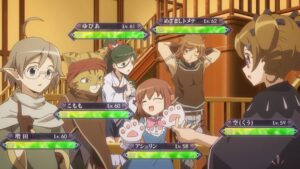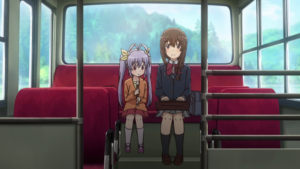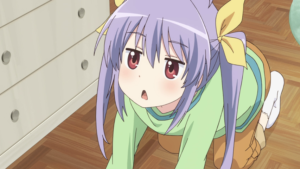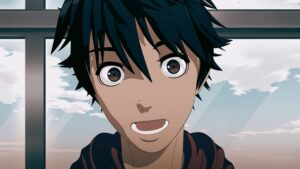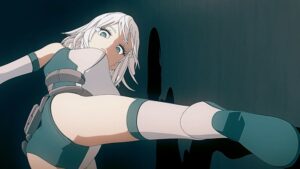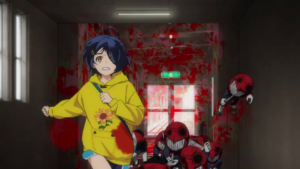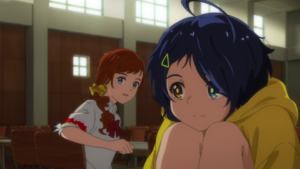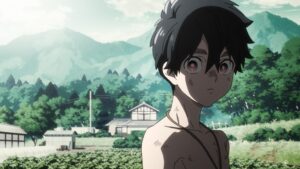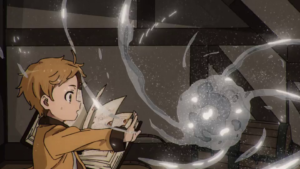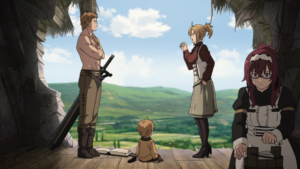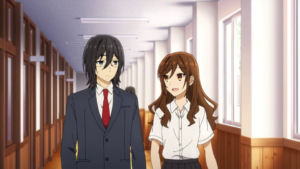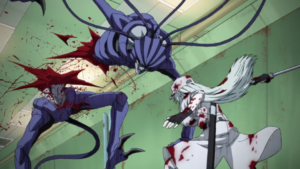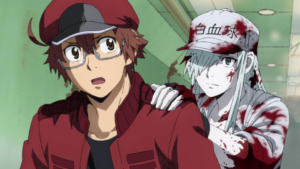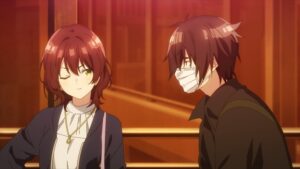Fruits Basket: The Final
Short Synopsis: A zodiac-themed family’s infighting results in tears, physical assault, and slumber parties.
Wooper: Here’s your yearly reminder that the Fruits Basket reboot 1) exists, and 2) is highly dramatic. These people can’t go one day without crying, though that’s hardly their fault, as most of them are victims of either tragedy or abuse. This episode carried the burden of catching Tohru up to speed on the Soma clan’s darkest secrets, which is sure to make this the most emotional season yet, given how empathetic she is. The list of things that might upset her is endless, but the headline item has to be the psychopathic tendencies of Akito’s reclusive mother. Now the series has two major villains, whose war with each other is certain to cause untold suffering for everyone around them. If that sounds like your ideal anime but you’re not already watching Fruits Basket, you’ve got plenty of time to catch up before the final season ends in September. Just be sure to pick up a mega-pack of Kleenex on your next Costco run.
Potential: ;_;
Amun: Fruits Basket, Fruits Basket. This show is world class in providing feels. And feels are sure to abound with the new villain’s arrival – but, in true Fruits Basket fashion, you now have feels for our previous main villain! Bah. I can’t believe you’ve done this all in one episode, Fruits Basket. I’m really going to miss this show when it’s done. Also, it seems like every OP is trying to one-up the previous one – I’m loving the use of real backgrounds with anime characters superimposed. But anyways, yeah, if we’re starting the season off with an episode like this, strap in – tear jerker alert for sure.
Potential: 100% sniff
Seijo no Maryoku wa Bannou Desu
Short Synopsis: Wrong girl gets summoned to another world and takes up magical essential oils.
Mario: I’m still not buying what Seijo no Maryoku is selling after its first 20 minutes. It has many trappings of the isekai genre: we know next to nothing about the main protagonist as a person before she’s transported to this fantasy world; she takes that fact too well and does nothing to return to her original world; and most importantly, things go a bit too smoothly for the girls so there’s little conflict to watch. You can argue against me on the last point, given that our protagonist is labelled “worthless” and gets dumped by the arrogant Prince, but still, she has her life conditions sorted out rather easily. And isn’t it obvious that our girl has more magic mana than others? I find it hard to believe the others couldn’t figure that out already. Lastly, the final scene is supposed to be the emotional payoff, but I would have believed it much better if our girl had used her healing powers, instead of using a magic potion to immediately heal a critically-injured hero? Now that’s a stretch. For now, the show feels like an otome-isekai with a bunch of handsome boys (akin to Hamefura last year but not half as good), but I really do hope the show doesn’t go the romance route. For audiences that enjoy slower, female-centric isekai (Hamefura, Bookworm), you can have a crack at it.
Potential: 20%
Amun: Unlike Mario, Seijo exceeded my expectations. As with Hamefura and Bookworm that he mentioned, Seijo is putting a little twist on our typical Isekai. Where Hamefura was gardening simulator 3000, Seijo will probably be more “magical essential oils” – fine by me, as long as I don’t have to buy any. There are plenty of generic isekai – and I watch most of them – so I appreciate a show that gives me something a little different. Sure there wasn’t that much conflict, but this was a setup episode – give it some time. Obviously, we’re not looking at “anime of the season” material here, but it should be serviceable enough. Seijo will probably be a less intense Rising of Shield Hero: the characters are fun, the overall story direction is pretty clear – I think we’re in for a nice gentle ride.
Potential: 75%
Super Cub
Short Synopsis: A sad high school girl buys a motorcycle.
Wooper: This show doesn’t just feature product placement – it IS product placement. This first episode is a 20 minute ad for Honda’s line of Super Cub motorcycles, which are the only cure for the female lead’s boring life. The first time she sits on one, the show cranks up the saturation to demonstrate that Honda products restore color to your world. It lingers shamelessly on logos and ends on a line of dialogue so blatantly engineered to sell bikes that my eyes nearly fell out of my head from rolling so fast. And yet, Super Cub is quite restrained in every other area of its presentation. It opens quietly, with scenes of early morning trains rolling gently into their stations and the sun rising on countryside landscapes. Instead of dialogue, the show places a premium on character animation – moments where the main girl butters her bread or scoops rice into a bento box create a placid mood that you rarely get from anime. The series even manages to find interest in a scene where she reads the owner’s manual for her bike, which is probably its biggest accomplishment. I’ve got no interest in watching a weekly advertisement, but I’ll give Super Cub this: its first episode was more artful than I had expected.
Potential: 40%
Mario: Super Cub took me by surprise there. I was expecting a dumb CGDCT entry but this first episode is anything but dumb. There’s no trace of fan-service or girls trying to be cute (well, if you don’t count their Cub-fetish); the show instead communicates with us visually on how a girl gets to meet her titular scooter. The restrained direction is surprisingly well done and we get to know the girl’s personality through her actions, not by her personality quirks like other lesser shows tend to do. This is a show that is comfortable with negative space. There’s little dialogue in this first episode, it’s instead interested in quiet moments like her sitting alone in the classroom while her classmates chit-chat around her, or how she takes her rice from the rice cooker. That’s the reason why we sort of feel precious when she rides the Super Cub or reads the freaking manual, because it does feel like a big step forward. While I have doubts that it has enough juice for the whole season, Super Cub’s first episode is no fluke.
Potential: 40%

